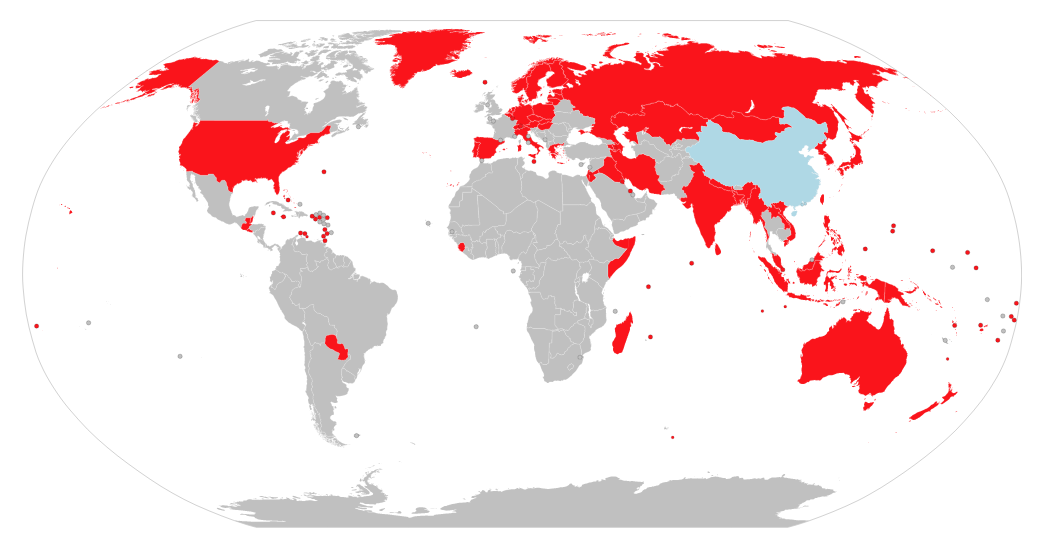Telehealth should play key role in preventing coronavirus spread in US and beyond
Posted: febrero 27, 2020

How do we respond adequately in a crisis? What if the patients that are critically ill are located in rural areas and/or on isolation precautions?
With the current coronavirus outbreak, there are legitimate reasons to explore Telehealth options. We’ve already witnessed the devastation and increasing cases in other nations, and the WHO is issuing an international concern, but on January 31, 2020, the Health and Human Services Secretary, Alex M. Azar II, declared a public health emergency for the US as well. As of February 25, 2020 China’s reported confirmed cases have climbed to 77,658 and 2,663 deaths. How do we respond? What resources do we utilize? How can we prevent further spread? How many unanswered questions like these do we have to resolve?
What do we need to know about coronavirus moving forward as a nation? The coronavirus is a novel respiratory disease, from a family of viruses found in a multitude of animal species. In rare instances, the animal reservoir virus can infect people. The novel virus we are dealing with is named SARS-CoV-2. Many people remember the SARS(severe acute respiratory syndrome) outbreak of 2003, which was also caused by a coronavirus. Both of which have their origin in bats.
Initially, coronavirus (COVID-19) was thought to be animal-to-person, but further research has shown that it is transmitted person-to-person. Given recent cases in Italy, we have also witnessed community spread as well. With its respiratory nature, COVID-19 symptoms include cough, fever, and difficulty breathing. Patients who have respiratory diseases, are immunocompromised, very young or advanced age are the populations at most risk, just as we see with any other sustained virus including Influenza. Typically recovery from the virus has been shown to be between two and six weeks. News stations have shown cities that look like ghost towns and commercial cruise ships with sustained isolation to try to combat the spread. The CDC continues to indicate the need for isolation and preparation to contain the outbreak.
A recent clinically relevant article was published about telemedicine in the field of infectious disease(ID). When we think of coronavirus, the media shows us images of healthcare practitioners treating patients in isolation. This practitioner is gowned from head to toe to try to prevent the spread or even the personal inoculation. The study we are referencing evaluates patients in remote hospitals that would need transfer to larger hospitals for proper ID consult care. Infectious Disease physicians provided ID consults via telehealth portals and had access to the remote Electronic Medical Record(EMR). This trial proved that telemedicine ID consults “serve as a useful adjunct in resource-limited settings,” and the reduction in length of stay (LOS) proved statistically significant, along with an antimicrobial stewardship effect. The patients treated in the case study did not have coronavirus, but that doesn’t mean we can’t apply these processes to other infectious disease cases. Telemedicine in this scenario allows ID physicians to give a consult to a geographically disparate area or with our current healthcare landscape in an outbreak to alleviate the burden of the pandemic.
Geographically challenged environments are just one angle of how telehealth can change lives in the current landscape. Another threat is healthcare worker exposure and infection with the virus. As a healthcare worker, you are expected to care for the ill, but many are putting themselves and their families at risk when coming in contact with a virus that spreads so easily person-to-person. A 2015 report by the WHO in response to the Ebola outbreak reported that healthcare personnel were up to 32 times more likely than the general population to become infected. Even with the best isolation precaution healthcare workers will continue to become infected, and these men and women are essential on the front lines to care for patients. If telemedicine could expose fewer providers all while increasing patient outcomes then we’ve accomplished something.
Telemedicine has already proven its value in many situations, but with Coronavirus(COVID-19) still broadening its grasp we may not understand the multitude of uses and global impact. An ABC News article indicates that the White House is seeking $1.25 billion in funding to combat the virus globally. Officials are responding that the United States is currently at low risk but also indicates continued personal protective measures, and urges communities to ensure processes are in place for remote communication. The article highlights teleschooling, decreased face-to-face interactions, and remote work environments, and indicates health systems should be ready with increased telehealth outlets.
With the current uncertainty, we can at least be mindful of preparation. Telehealth can impact patient care and decrease spread in the United States, but also promote strategic partnerships with other affected nations. These times necessitate constant innovation in care, and Let’s Talk Interactive wants to be at the forefront of providing measures to ensure adequate control of this overarching virus.